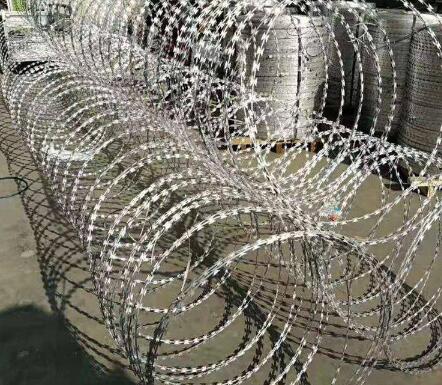The History and Evolution of Barbed Wire and Chain Link Fencing
Barbed wire and chain link fencing have become ubiquitous in modern society, used for everything from agricultural purposes to security. Their designs, while simple, have a rich history that addresses human needs for protection, delineation, and control over land and resources.
The Inception of Barbed Wire
Barbed wire was first patented in 1867 by Joseph Glidden and became a revolutionary tool for farmers in the American West. Prior to its invention, open-range ranching made it difficult to contain livestock and protect crops from animal intrusion. With its sharp barbs positioned along strands of wire, barbed wire provided an effective deterrent against both animals and potential trespassers. Glidden’s design was not the first attempt at crafting a fencing solution; however, it was certainly the most successful due to its simplicity and efficiency.
Barbed wire transformed the American landscape, allowing for the fencing of vast areas of land. It played a significant role in the settlement of the West by enabling farmers to establish boundaries, thus reducing disputes over land. The era known as the Range Wars saw significant conflict over land rights, and barbed wire became a symbol of both agricultural advancement and contention.
The Rise of Chain Link Fencing
While barbed wire provided a necessary solution for rural areas, urbanization in the late 19th and early 20th centuries demanded a different approach to security and property delineation. Enter chain link fencing. Introduced in the early 1900s, chain link fencing, made from interlocking steel wire, offered a durable and flexible option for residential and commercial properties alike.
Chain link fences gained popularity due to their ability to enclose spaces without obstructing visibility, unlike solid fencing options. This transparency was particularly appealing in urban settings where safety was paramount, and visibility helped deter crime. Additionally, the relatively low cost and ease of installation made chain link a favored choice among property owners.
barbed wire chain link

Materials and Technology Advancements
Both barbed wire and chain link fencing have undergone significant technological advancements. Initially made from iron, modern fencing uses galvanized steel or vinyl-coated wire, improving durability and resistance to corrosion. These innovations have extended the lifespan of fences, minimizing repair and replacement costs for owners.
Furthermore, development in fencing systems has integrated more sophisticated technologies. Today, chain link fences can be equipped with privacy slats to enhance security while maintaining the benefits of visibility. Additionally, there are options for enhanced security, such as adding barbed wire atop chain link fences in sensitive areas like prisons or military installations.
Environmental and Aesthetic Considerations
As society has become more environmentally conscious, discussions surrounding fencing materials have also emerged. Traditional barbed wire and chain link fencing are often seen as eyesores in scenic landscapes. Consequently, there has been a trend towards using alternative materials—like treated wood or composite fencing—that offer both security and aesthetic appeal.
Green technologies have also influenced fencing choices, such as using recycled materials in the production of chain link fences. This trend not only supports sustainability but meets the demands of eco-conscious consumers.
Conclusion
Barbed wire and chain link fencing are more than mere barriers; they represent a complex interplay of technology, social needs, and evolving landscapes. From their inception in the 19th century to the modern-day applications seen around the world, these fencing solutions reflect humanity's quest for security, boundaries, and resource management. As we look toward the future, it will be fascinating to see how these structures adapt to technological advancements and environmental needs, continuing to shape our interactions with the land and each other.

















